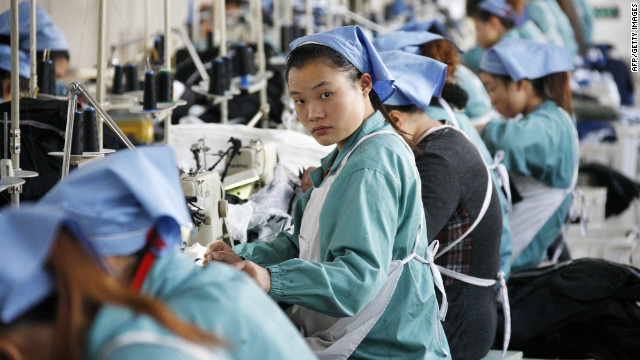|
Viet Nam's textile and garment sector is likely to face challenges this year to reach its target of US$18.5-19 billion export turnover, according to the vice-chairman of the Viet Nam Textile and Apparel Association (VITAS), who spoke at a seminar held yesterday in HCM City. Dang Phuong Dung, vice chairman and secretary general of VITAS, said global economic woes still plagued major markets as the US, EU and Japan. Organised by VITAS and Dun & Bradstreet Co (D&B), the seminar heard opinions and suggestions on the sectors' future growth and plans. "The public debt crisis and EU consumers have tightened their spending, leading to lower export orders," she said. In addition, production costs and the prices of electricity, water and fuel as well as salaries and bank-loan interest are all on the rise. "One of the biggest challenges is the lack of human resources, especially for high quality workers," she said. Many companies cannot fulfill orders on contract because they do not have enough workers, affecting product quality. She said that businesses should improve their sense of social responsibility, guarantee reasonable incomes for workers, build a healthy working environment, and create good promotion opportunities for workers. She also noted that heavy reliance on imported materials and outsourcing orders that see a low return rate would not increase added value for export items or the competitiveness of the sector. Production, technology and productivity management are all still weak, according to Dung. Most small- and medium-sized enterprises (SMEs) lack marketing skill, and design capacity for producing unique products was poor. In addition, trademarks are not developed well. Moreover, exporters have faced difficulties in accessing bank loans, and lack capital to import materials. As a result, exporters must restrict their operations and only take outsourcing orders. That has lowered the competitiveness of the sector. Foreign-currency loans in Viet Nam have a high interest rate of 6-8 per cent per year, but foreign- currency loans in many other countries are being offered at an interest rate of 0.5-2 per cent. Dung said the nine-member Trans-Pacific Partnership (TPP), which is still in the negotiations stage, is seen as a great opportunity for the Vietnamese textile and garment sector. With TPP, the tariffs imposed on the goods that Viet Nam and TPP-member countries export to the US would decrease gradually before they are removed. This means that when Viet Nam's textile and garment products can be exempted from tax, it would be more competitive in the US market with other rivals. "However, exporters will face a new challenge with regard to origin. It is critical to take into account all the steps in making finished products from sourcing materials to finishing products, as Viet Nam is known as lacking professionalism in terms of weaving, dyeing and finishing fabrics," she said. Because most Viet Nam garment factories have to import fabrics for production, Dung said it was necessary to develop supplementary factories so that Viet Nam garment exporters could take the initiative during the entire process. Two promising markets are Russia and South Korea. Russia's entry into the World Trade Organisation is expected to bring lower tariffs and even zero tariffs on Vietnamese exports. In addition, many companies make good use of preferential tariff agreements, especially incentives from South Korea, where Vietnamese exports jumped in turnover from $4.6 billion in 2010 to $6.5 billion last year. She suggested that the Government also promote negotiations and sign Free Trade Agreements to create meaningful growth for the textile and garment industry. Bill Gadd, chief executive officer of US-based Viet Nam B2B Direct-International Trade Solutions Co, said Viet Nam was favoured by US companies and they were eager to do business with the textile and garment sector. To be successful with American companies, they should learn business fundamentals and have thorough preparations such as a company profile, English website, brochures in English and samples available. Quality and timely delivery are also important to this market, as well as prompt responses to transactions and answers to emails. Nguyen Ngoc Hung, country director of Dun & Bradstreet Viet Nam (D&B), said in global markets, the lack of transparency in online commerce was a serious barrier to growth. Global businesses wanting to establish relationships with booming economies like Viet Nam, China, Brazil and India need to know more about whom they can trust. Exporters should build a solid alliance with a relevant and reputable global brand. Through Dun & Bradstreet, Vietnamese exporters could seek information about potential business partners. Dung said the textile and garment industry had contributed 10 per cent of industrial manufacturing value. The sector uses more than 2 million labourers, making up 5 per cent of the national workforce. The industry's exports rank first in the country's exports, making up 16 per cent of Viet Nam's total export revenue. Viet Nam is in the top 10 of 153 textile-export countries worldwide, after China, Hong Kong, India, Taiwan and Pakistan. ¡ªVNS |
|
Vietnam: Garment sector faces rough road ahead
Updated: 2012-3-31 Source: ITCE

Recommended News
Photo Gallery
Most Popular



